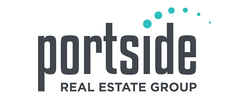Preliminary flood hazard data (preliminary data) provide the public an early look at their home or community‘s projected risk to flood hazards.
![]()
Recent changes to FEMA maps that determine federal flood insurance rates are going to have drastic effects on Maine homeowners living in flood-prone areas. In addition, Maine is home to one of the oldest housing stocks in the U.S., making the increase in insurance rates nearly “astronomical”, according to Maine’s Floodplain Management Program coordinator Sue Baker.
Rising insurance rates are driven by the Federal Emergency Management Agency’s mapping process called FIRM (Flood Insurance Rate Map). Maine homes in flood hazard areas that were constructed before the establishment of FIRM received insurance at reduced rates subsidized by state and federal programs. This stands in contrast to buildings built after FIRM, which bases insurance premiums on elevation standards.
Owners of older homes or buildings will experience immediate changes in their insurance rates, a development that many claim is unfair because it penalizes them for owning property built prior to implementation of federal standards. Before FIRM, homeowners paid lower rates, regardless of whether their home’s lowest floor was below or above estimated flood levels.
Baker asserts that post-FIRM homes have policy rates based on how high the lowest floor is above ground and where it is located in the home. Older buildings, she says, are being docked because they are using most of the subsidized program’s funds. Although these new FEMA map changes will affect approximately 20 percent of U.S. flood insurance policy holders, it is estimated that changes will affect nearly 40 percent of Maine homeowners living in flood-prone areas.
Pre-FIRM subsidy elimination is scheduled to begin on January 1 and October 1, 2015. Premiums will increase to “true risk” conditions by 25 percent annually for four years. These mapping changes that are negatively affecting Maine homeowners stem from Congressional mandates to instigate updates according to the availability of funds.
Several Maine counties have already undergone FEMA map changes–Hancock, Washington, York and Cumberland. Sagadahoc, Waldo, Knox and Lincoln counties are currently waiting new imagery before changes occur. Maine homeowners should be aware that preparatory maps are subject appeals, changes and public review before they are adopted by communities and finalized by FEMA.
How Maine Homeowners Can Reduce Flood Risk
Homeowners living is certain counties may be able to reduce their premiums by mitigating the risk for experiencing flooding. For example, the counties of Berwick and Saco require buildings to have three feet of freeboard beyond base flood height. This three feet is how much floodwaters are expected to rise during an anticipated “100 year flood”. Additionally, some Maine communities are developing approaches to potential flood risks by combining information about storm surges, tides and sea levels. Lincoln County took steps several years ago to create scenarios involving potential flood patterns to provide insights into making advantageous infrastructure and zoning decisions.
Lastly, a homeowner could get a Letter of Map Amendment also known as LOMA. LOMA is a process in which certain mapping and survey information may be submitted to FEMA to request that a document that officially removes a property and/or structure from the Special Flood Hazard Area (SFHA) is issued. Usually an Elevation Determination is done on a property first to establish the elevations around the building in relationship to the Base Flood Elevation (BFE) on the Flood Maps. A LOMA is submitted to FEMA to notify them that the flood map needs to be amended. Once this is complete and accepted by FEMA the flood insurance requirement may be waived or modified.
